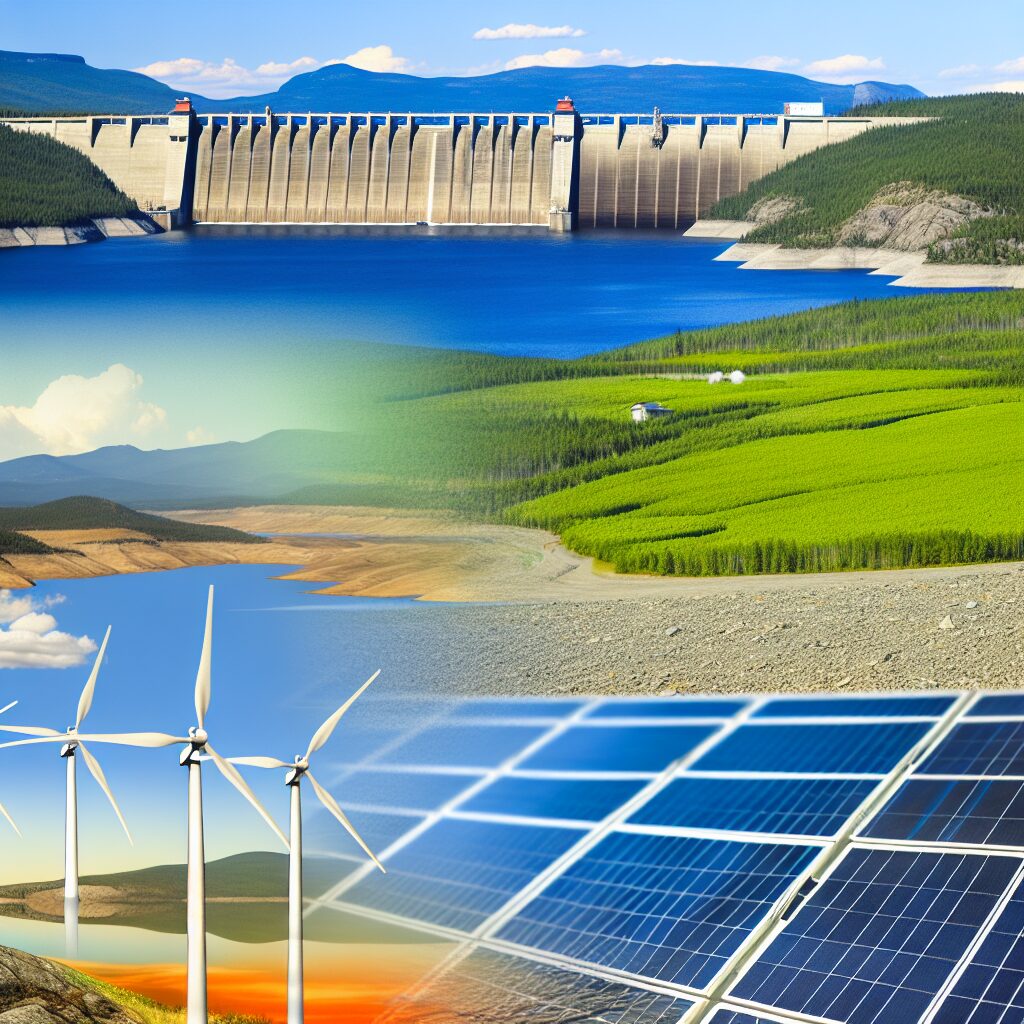Canadian Hydropower Declines, Necessitating Expansion of Wind and Solar
Canada has long been celebrated for its robust hydropower capabilities, a reliable and renewable energy source that has powered homes and industries for decades. However, a recent downward trend in hydropower generation has prompted a critical need to diversify the country’s renewable energy portfolio. With climate change impacting water levels and hydropower reliability, the focus is now shifting towards expanding wind and solar energy solutions.
The Impact of Climate Change on Hydropower
Hydropower has traditionally been a cornerstone of Canada’s renewable energy strategy. This form of energy generation relies on the consistent flow of water through dams and rivers to produce electricity. However, climate change has disrupted this once-dependable resource. Fluctuating precipitation patterns and prolonged droughts have led to decreased water levels in reservoirs, significantly affecting hydropower output.
In some regions, the reduction in water availability has been so severe that hydropower plants are operating well below their capacity. This creates a ripple effect, causing energy shortages and increased reliance on non-renewable energy sources like coal and natural gas to fill the gap. To maintain energy security and meet environmental goals, Canada must explore and invest in alternative renewable energy sources.
Why Wind and Solar?
Wind and solar energy present a viable solution to the challenges faced by the hydropower sector. Unlike hydropower, these renewable energy sources are less susceptible to the impacts of climate change. Wind turbines and solar panels can be installed across diverse geographic locations, reducing the risk associated with relying on a single energy source.
Additionally, advancements in technology have made wind and solar energy more efficient and cost-effective. The decreasing costs of solar panels and wind turbines, coupled with government incentives, have made these options highly attractive. According to industry experts, the potential for wind and solar energy in Canada is vast, with the capability to not only meet but exceed current energy demands.
Government Initiatives and Investments
Recognizing the need for a diversified energy portfolio, the Canadian government has launched several initiatives to promote the expansion of wind and solar energy. Substantial investments are being made to develop infrastructure, streamline regulations, and provide financial incentives for renewable energy projects.
In recent years, Canada has seen a surge in the construction of wind farms and solar parks. These projects are not only generating clean energy but also creating jobs and stimulating economic growth in local communities. By investing in wind and solar energy, Canada is taking significant steps towards achieving its climate goals and ensuring a stable energy future.
Challenges and Opportunities
While the shift towards wind and solar energy offers numerous benefits, it is not without challenges. The intermittent nature of these energy sources requires the development of advanced storage solutions and grid management systems. Battery technology and smart grids are becoming essential components of a reliable renewable energy system.
Moreover, the transition to wind and solar energy necessitates substantial investments in research and development. Continued innovation is crucial to overcome technical barriers and enhance the efficiency of renewable energy technologies. Public and private sector collaboration will play a vital role in driving these advancements.
Despite these challenges, the opportunities presented by wind and solar energy are immense. Canada’s vast landscapes and favorable climatic conditions make it an ideal location for large-scale renewable energy projects. By harnessing the power of wind and sun, Canada can reduce its carbon footprint, enhance energy security, and lead the global transition to sustainable energy.
The Path Forward
The decline in Canadian hydropower serves as a wake-up call for the urgent need to diversify the country’s energy sources. The expansion of wind and solar energy is not just a necessity but a strategic move towards a resilient and sustainable energy future. Through government support, technological innovation, and community engagement, Canada has the potential to become a global leader in renewable energy.
As the world grapples with the effects of climate change, Canada’s proactive approach in expanding wind and solar energy sets a powerful example. By investing in these renewable resources, Canada is not only safeguarding its energy future but also contributing to a healthier planet for generations to come.
Conclusion
The decline of Canadian hydropower underscores the importance of a diversified and resilient energy portfolio. Wind and solar energy offer a promising solution to the challenges posed by climate change and reduced water availability. With strategic investments and innovative technologies, Canada is well-positioned to lead the way in renewable energy, ensuring a sustainable and secure energy future.
Source
https://www.google.com/url?rct=j&sa=t&url=https://www.nationalobserver.com/2024/09/05/news/big-wind-solar-build-out-needed-canadian-hydropower-less-reliable&ct=ga&cd=CAIyHDBjNjdhMjlmZDdkNDZmZmI6Y29tOmVuOkNBOlI&usg=AOvVaw3e_5fqxe6

